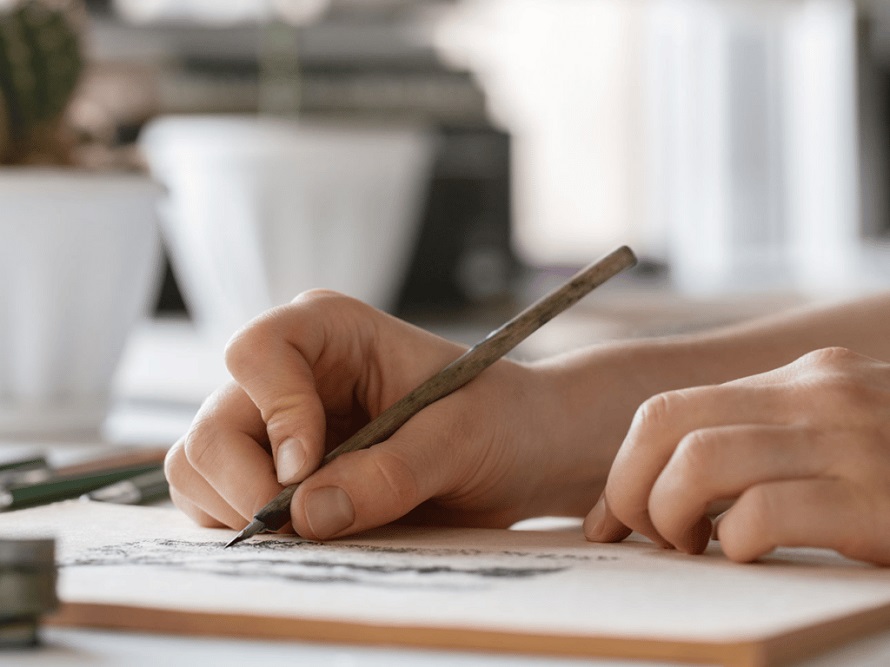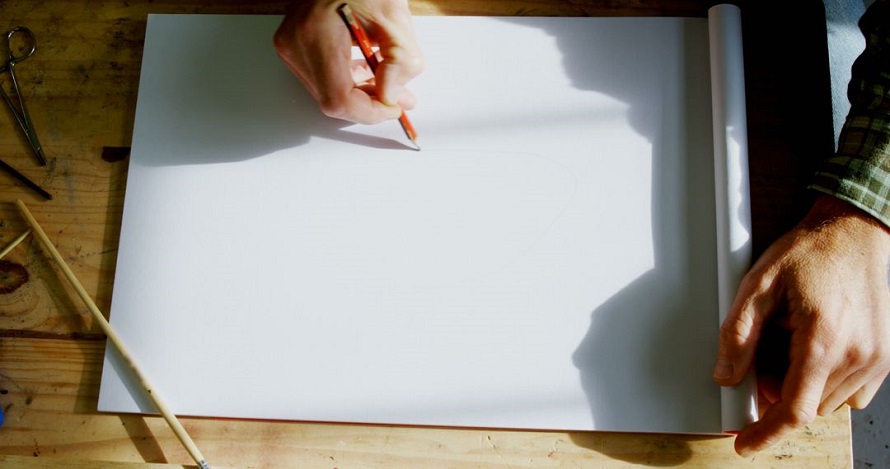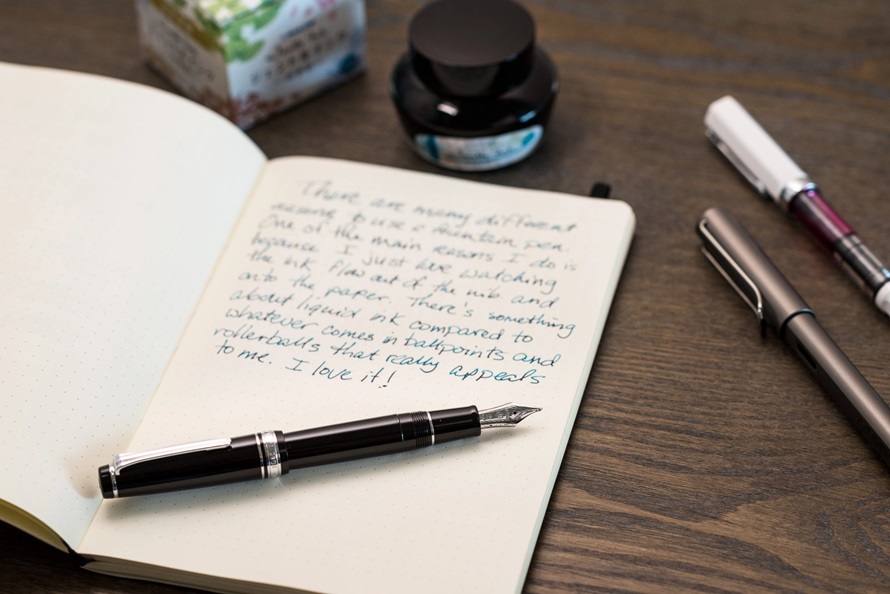Lifestyle
Create Stunning Pieces with Ink: Introduction to Ink Drawing
As one of the oldest drawing mediums, ink has a rich tradition in the world of art and if you are thinking about including it in your artwork, you will be in the company of well-renowned artists. Da Vinci kept sketchbooks, Raphael created sketches of his frescoes, and Goya left a beautiful portrait of his beloved Duchess in ink. It has been the medium of choice for master illustrators for centuries, originating, as most art techniques do, from ancient Egypt. Today, modern artists are not just reviving this form of art, but redefining it.
Using pen and ink is elegant and antiquated, and the multitude of techniques allows you to create diverse and wide-ranging drawings, illustrations, and paintings. The intense colours, fluidity, and transparency of the ink are an opportunity to create unique works of art. This is a medium that requires agility and discipline and might seem complex and demanding to beginners, but once mastered the possibilities are endless.
The Versatility of Ink
The rich pigmentation, quick-drying nature and compatibility with various surfaces make the ink one of the most versatile mediums. You can balance the brightness or darkness, or create a striking contrast, density or light, using thick or thin lines and a range of tones. Whether you like to explore the marvel of this media on its own or mix it with watercolours, pastels or collages, you will certainly find it an extraordinary experience.
Varieties of Drawing Ink
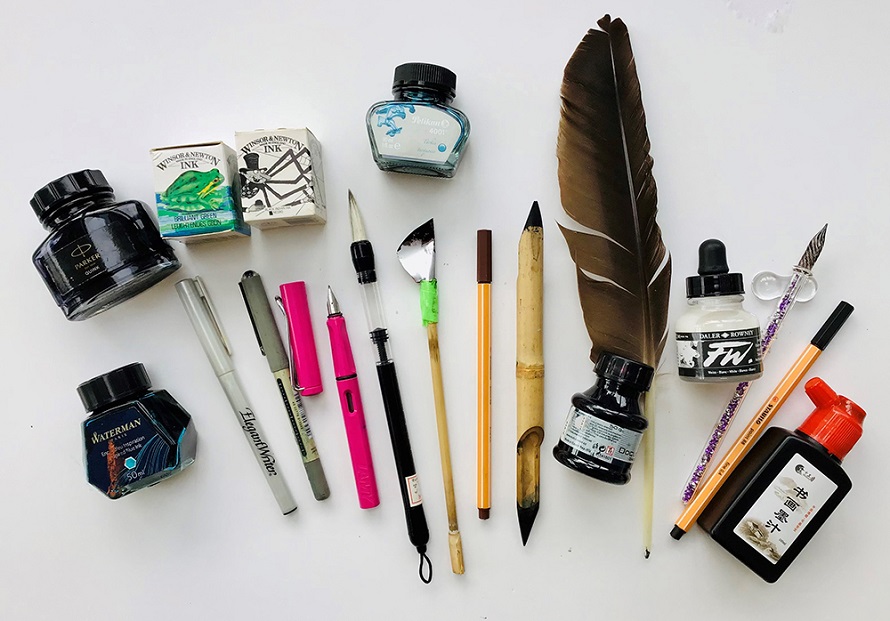
The developments in the production of ink over the last couple of decades have resulted in an increasing number of pigments and acrylic resins with a variety of dyed-based and pigmented acrylic inks with intense colours and resistance to fading. Before you decide to buy drawing ink and try your hand at new techniques, it’s good to know a bit more about the different types available on the market and their unique properties.
The base for most inks is oil, gum Arabic, alcohol, or acrylic, and there is a wide assortment of black or coloured inks. Here are the different types to know before you buy drawing ink.
- India ink: This is a common variety known for its intense black colour and it’s suitable for calligraphy and drawing. It’s made from carbon black or lampblack mixed with a binder such as shellac or gum Arabic. Once dry, the carbon molecules form a waterproof layer making it ideal for applications that require water-based media to be layered on top.
- Acrylic ink: A type of drawing ink that consists of finely ground pigments suspended in an acrylic polymer emulsion. It offers more flexibility and a vast range of vibrant colours. Acrylic ink dries quickly to a permanent, water-resistant finish and can be used for airbrushing, stamping, and watercolour effects. It works well on a variety of surfaces, including paper, canvas, and even non-porous materials like plastic or metal.
- Sumi ink: A traditional drawing ink originating from East Asia and used in brush painting and calligraphy. It’s made from soot, usually derived from burned vegetable oil, combined with a binding agent such as gelatin or glue. It produces a rich black colour and flows smoothly on absorbent papers.
- Fountain pen ink: A popular choice for both beginners and more advanced artists who prefer the convenience of using a fountain pen. The specially designed ink offers a consistent colour and smooth flow. It can be water or pigment-based and you can find it in an array of colours.
Drawing Techniques
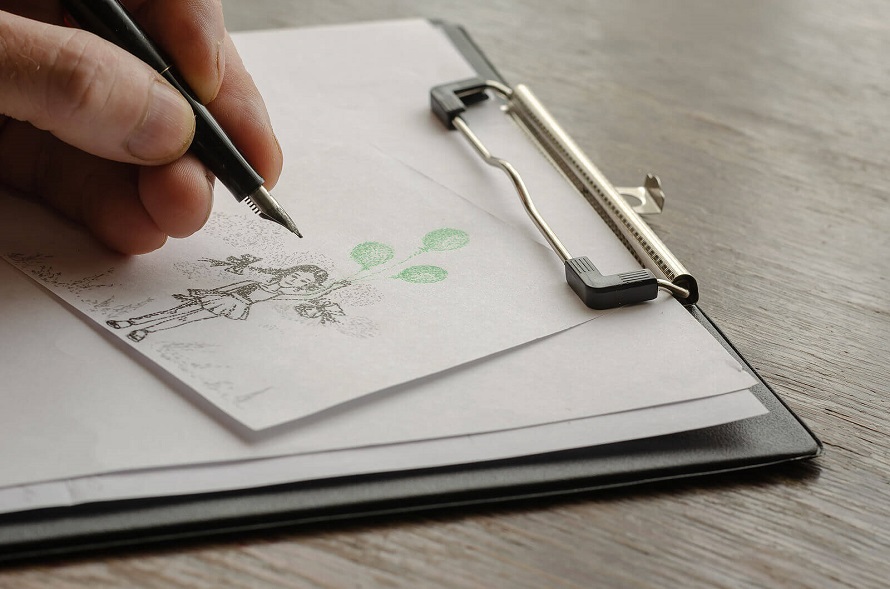
- Line Drawing – Using ink, you can create precise and intricate line drawings. Artists employ various tools, such as pens, nibs, or brushes, to achieve different line weights and textures. India ink and acrylic ink work particularly well in this technique due to their smooth flow and ability to create fine lines.
- Washes – The same types of ink can also be used in ink-wash painting. This is a technique where you can dilute the drawing ink with water and create washes of varying transparency. By applying a wash over a drawing with a brush, the artist can create subtle gradations and tonal effects.
- Pointillism – Just as the name suggests, this is a technique where you meticulously apply tiny dots or points to create a larger image. By using different colours and densities, the artists are able to create a range of textures and shades. The most favoured for this technique are the fountain pen inks with their variety of colour selections.
- Ink Splattering – Ink splattering involves flicking or dripping ink onto a surface to create random patterns. This is a dynamic and spontaneous technique of ink drawing that allows artists to achieve different effects by varying the viscosity of the ink and the distance from which is splattered.
Drawing Tips
When you are first starting with ink drawing, the unforgiving medium might seem daunting. But mistakes and flaws are not only a chance to learn from, they are also something that can add charm to the piece. Make sure you have all the necessary tools before you start and be prepared. You will need plenty of water to wet the paper, dilute colours and use in washes. You also need paper towels to wipe excess water off and control the spread of the ink. Don’t use the ink straight from the bottle and try different tools like pens, nibs, twigs, brushes, pipettes, and sprayers. Dilute the ink and keep things simple. Let the subtleties of tone and transparent veils of colour do the talking, and don’t overwork them. Try different types of paper like heavyweight or rice paper.
Final Words
Drawing ink is widely used in the field of illustration by comic book artists, graphic designers and illustrators. It is also perfect for calligraphy and creating beautiful letterforms and decorative scripts. Many artists combine ink with other mediums in their work to achieve definition and precision. Whichever field or technique you choose to work in, remember, ink is both strict and precise as well as vivacious and lively. Let it flow and it will find its edge.


